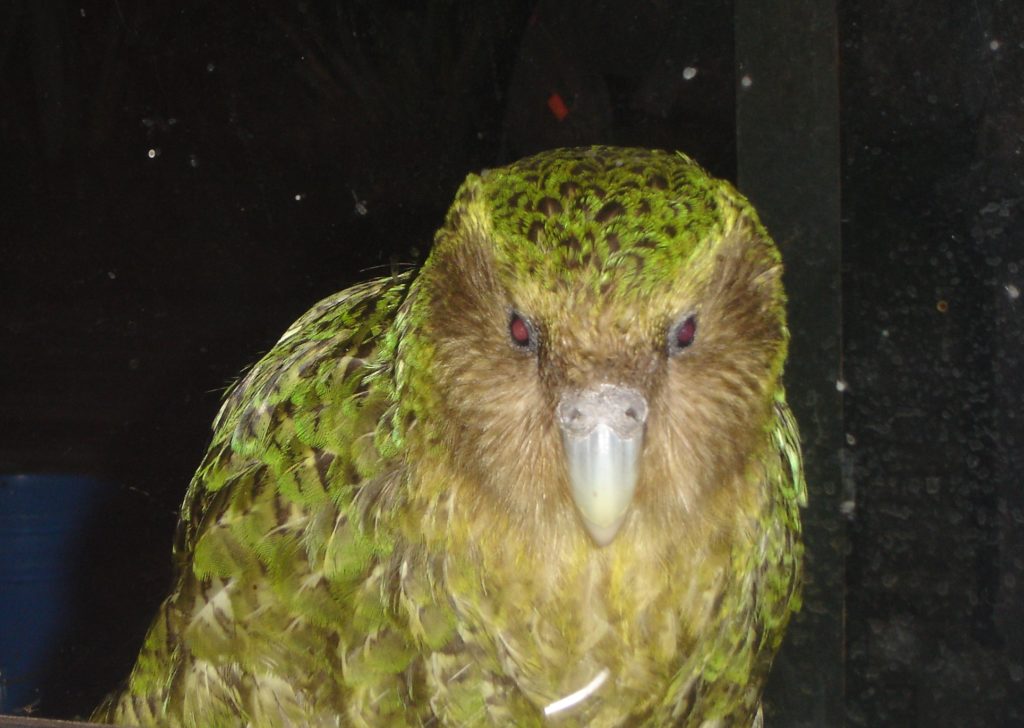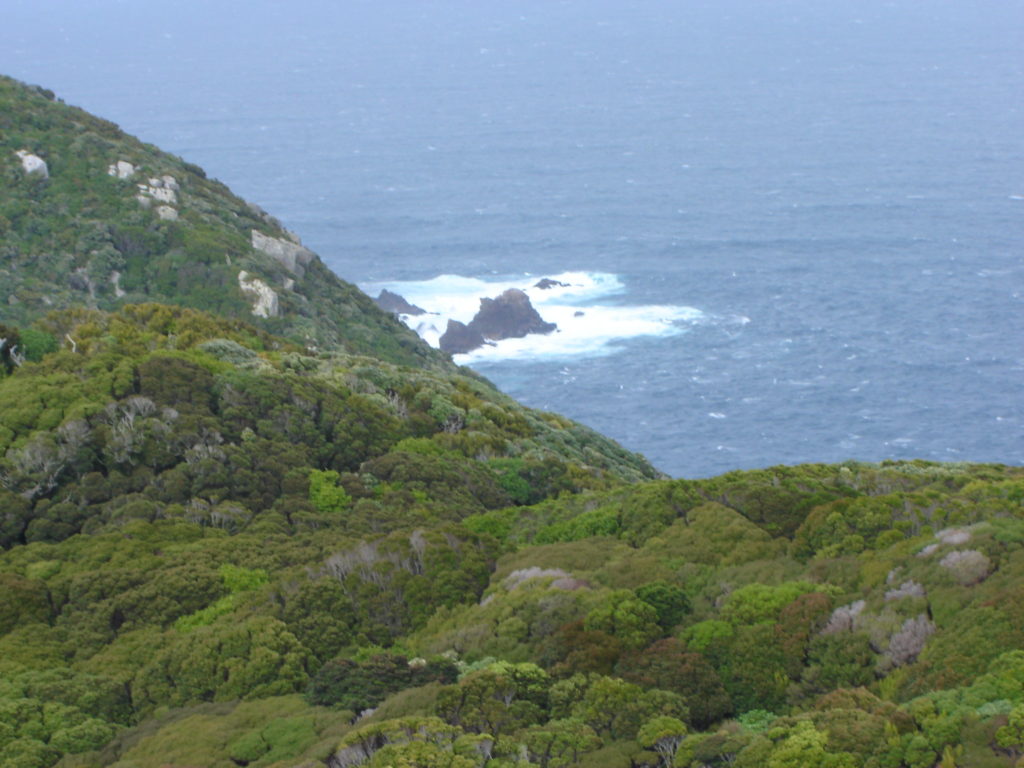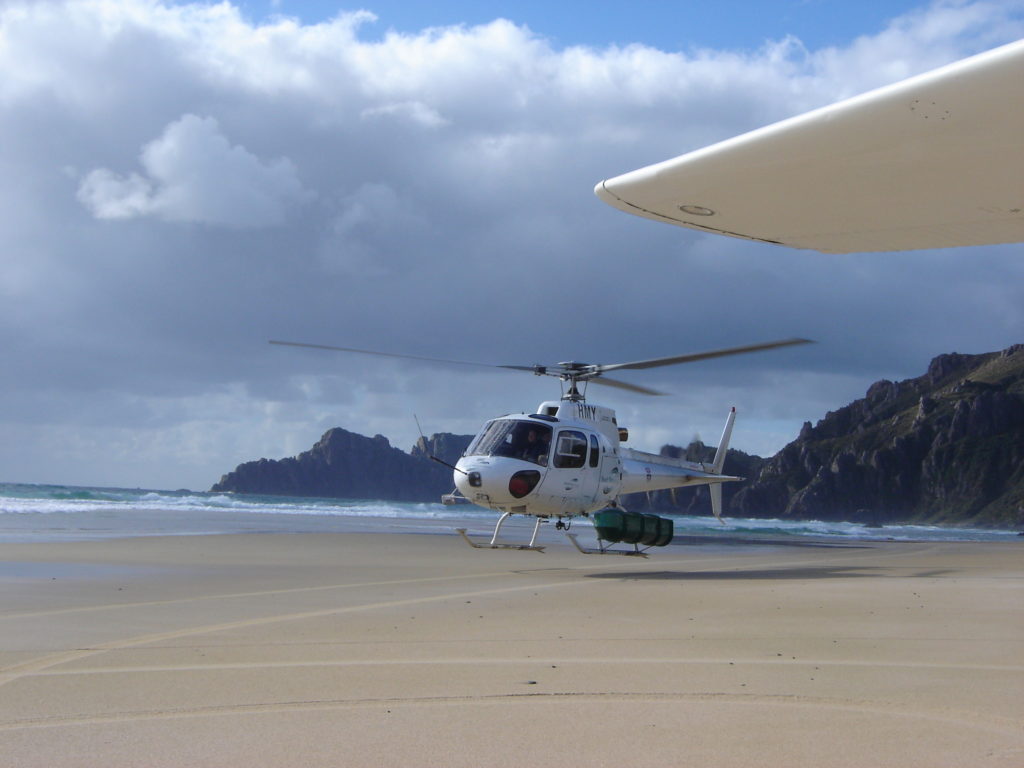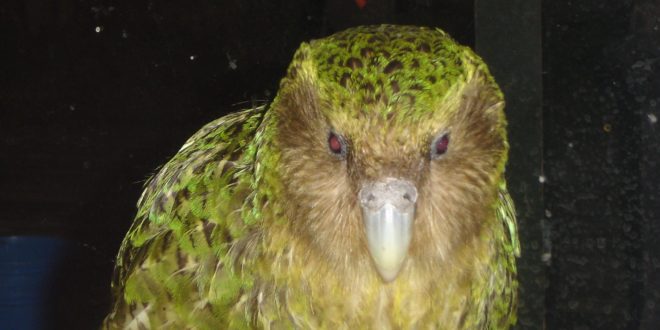What would it take for you to leave home for 3 weeks, and head to an isolated destination that’s even further south than Stewart Island? If helping save the rare and intriguing kakapo (and the possibility of sighting one of these playful parrots) was the lure, would that help you pack your bags?

It’s certainly the incentive that sent me, as a Department of Conservation volunteer, winging my way to Whenua Hou (also known as Codfish island) 68km south of Invercargill as the crow flies. Volunteers on the island fulfil several roles from nest-minders to supplementary feeders, and some of the most important jobs of all – cooks!
My job was to daily fill the kakapo feeding stations with a special nutritious mix of pellets, and to top up the birds’ drinking containers with fresh water. Because these food and drink stations are situated all over Whenua Hou, there is the possibility for a volunteer to eventually take in the scenery of the entire island – and what a magnificent landscape it is.

Whenua Hou is like wild New Zealand in miniature, but with one astonishing difference – it is predator-free. With no possums, deer or rats, the vegetation is lush and the birdsong deafening. One day you might be walking along trickling amber streams with rare mohua (yellow heads) cheeping in the canopy above, the next you are jogging along a boardwalk through alpine vegetation, or clambering up a steep path past giant rata weighed down with sweet-scented native orchids. And sometimes … you may even encounter a kakapo, although on no account are you permitted to engage with the bird! In fact, volunteers are required to work to a strict code of practice in all areas of conduct.
Hygiene is paramount, from having your footwear and belongings treated with sanitising solutions before departing from the mainland to thorough hand washing prior to preparing the kakapo’s food. Absolutely no material (animal, mineral or vegetable, dead or alive) can be removed from the island, and everyone must lend a hand with chopping firewood, doing dishes, and general hut cleaning. But if it sounds like hard work, the rewards are huge.
On Whenua Hou, friendships are forged, there is a real feeling of time out on an island that can only be reached by air (fishing boats are not permitted to land), and most exciting of all, when the kakapo recovery’s ambassador, Sirocco, is in residence, there is a very good chance of a close-up view of one of the most cheeky and adored parrots in the world.

Raised by hand, Sirocco travels to many destinations in New Zealand to promote the cause of the kakapo, but he is never more at home than on Whenua Hou where he enjoys stalking around the hut in the early morning and evening, and booming during the night. You may even catch the scent of his musky feathers as he struts about, trying to catch the attention of anyone watching.
If you are interested is being a Department of Conservation Volunteer on Whenua Hou, or in an other part of New Zealand, check out the DOC webpage and make enquiries. Expect to make a monetary contribution to your time on whichever project you are accepted for, and if working with kakapo is your aim, be sure to get in quick!









Join the Discussion
Type out your comment here:
You must be logged in to post a comment.